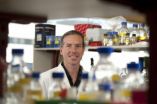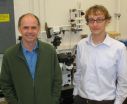(Press-News.org) Clinical research has greater societal impact over a 15-20 year timescale, while basic research has greater academic impact, according to a new study from RAND Europe and the Health Economics Research Group (HERG) at Brunel University.
Project Retrosight was a multinational, four-year study that investigated the translation of basic biomedical and clinical cardiovascular and stroke research, and its impact on future work, policy, products and healthcare. The study was based on a rich source of material taken from 29 carefully selected case studies of grants for research conducted in these areas that were awarded 15-20 years ago.
Five key findings from the study are:
A large and diverse range of impacts arose from the 29 grants studied.
There are variations between the impacts derived from basic biomedical and clinical research.
There is no correlation between knowledge production and wider impacts.
The majority of economic impacts identified come from a minority of projects.
We identified factors that appear to be associated with high and low impact.
The study was carried out by a consortium of research partners located in Australia, Canada and the UK, led by RAND Europe and HERG. The research used the Payback Framework, which provides a common structure for examining the research funding process and understanding research impact.
The research was led by Steven Wooding, Research Leader at RAND Europe, who said: "The study showed that research is important, that it has real tangible benefits for society and that how you fund it matters. If you want to make a difference to patients over a 15-20 year time-scale, clinical research is more effective. If you want to build knowledge for the longer-term, then basic research is better."
Professor Martin Buxton at HERG added, "Project Retrosight builds on successful methodologies already used to evaluate diabetes and arthritis research funding. We hope its further applications will inform future research funding in more medical disciplines and hence, benefit more patients."
Each of the case studies, on which the research for the project is based, was developed using a range of methods, including structured interviews, document and literature reviews, and bibliometrics. Once the fieldwork was completed, the case studies were systematically rated by an international panel of experts to identify those considered relatively high or low in terms of impact in each payback category.
"Given more opportunities for investment in research than can be supported today, funders need better data and information on which to make important decisions," said Jonathan Grant, President of RAND Europe and a key member of the project team. "Project Retrosight deepens our knowledge of the 'science of science' to understand what works in research funding."
Professor Dame Sally C. Davies, Director General of Research and Development and Chief Scientific Adviser for the Department of Health and NHS, and Interim Chief Medical Officer, commented, "It is important that research funders support, develop and apply research and analysis to inform their strategic thinking, funding policy and general decision-making. Project Retrosight makes an important contribution to this evidence base."
INFORMATION:
Lead organisations include:
RAND Europe is a not-for-profit research organization that helps to improve policy and decision making through research and analysis. It is an independent affiliate of the RAND Corporation based in the US. Its interdisciplinary research covers a range of policy-focused programmes and method-focused groups. www.rand.org/randeurope
The Health Economics Research Group (HERG) at Brunel University has developed an international reputation in health economics over more than twenty-five years. HERG's strategic focus is on the economic evaluation of a broad range of clinical and health service technologies and on assessing the payback from health research. Its dual aim is to provide applied, policy-relevant research whilst developing and refining methods to increase the rigour and relevance of such studies.
http://www.brunel.ac.uk/herg
Additional organisations supporting Project Retrosight include the National Institute for Health Research (NIHR), Canadian Institutes of Health Research (CIHR), Heart and Stroke Foundation of Canada, National Heart Foundation of Australia, Instinct and Reason, AU, the Research Evaluation and Performance Project, AU, The Centre for Science & Technology Studies (CWTS), NL, Stroke Association, UK, and the British Heart Foundation.
END
OTTAWA – March 6, 2011 – Insight into the complex biological mechanisms that cause heart disease has taken a major step forward with the discovery of 13 new genes that increase the risk of coronary artery disease (CAD). The influence of the majority of the new genes is independent of other established risk factors, suggesting new, unsuspected causes of CAD. The discovery more than doubles the number of genes known to affect the progression of heart disease.
The research also verified the association of 10 previously identified genes to the population at large, meaning ...
Scientists from the Walter and Eliza Hall Institute have identified the key immune cell population responsible for regulating the body's immune response.
The finding could have wide-ranging repercussions for the treatment of autoimmune diseases, organ transplantation and cancer, and change how the efficacy of newly developed drugs is measured.
The discovery was made by Dr Erika Cretney, Dr Axel Kallies and Dr Stephen Nutt from the institute's Molecular Immunology division. It centred on a population of immune cells called regulatory T cells.
Regulatory T cells (T-regs) ...
Japanese researchers have been immersing iron-based compounds in hot alcoholic beverages such as red wine, sake and shochu to induce superconductivity.
Scientists from the National Institute for Materials Science, Japan, found that immersing pellets of an iron-based compound in heated alcoholic beverages for 24 hours greatly increase their superconducting ability.
Iron-based compounds usually become superconductive after being exposed to air. This process however can take up to several months. This study demonstrated that superconductivity can be induced in just one ...
Microbicides can be used to protect against HIV, and other sexually transmitted diseases, either on their own or with the added protection of a condom. New research published by BioMed Central's open access journal AIDS Research and Therapy has investigated the use of lubricants, originally designed for vaginal application, and has developed and tested new, rectal specific, formulations.
Unprotected sex is one of the major ways that HIV spreads through the population. However most research has focused on the production of vaginal microbicides which, due to differences ...
An international research collaboration has identified 13 new gene sites associated with the risk of coronary artery disease and validated 10 sites found in previous studies. Several of the novel sites discovered in the study, which is being published online in Nature Genetics, do not appear to relate to known risk factors, suggesting previously unsuspected mechanisms for cardiovascular disease.
"We now have identifed 23 specific genetic 'letters' that appear to confer risk for myocardial infarction and other aspects of coronary artery disease," says Sekar Kathiresan, ...
In an improvement over open-heart surgery, cardiologists now use catheters to eliminate damaged heart tissue in certain patients, such as those with arrhythmias. But this, too, can be a long and painful procedure as many catheters, with different functions, need to be inserted sequentially.
Now an interdisciplinary team including researchers from Northwestern University has developed one catheter that can do it all. This tool for cardiac ablation therapy has all necessary medical devices printed on a standard balloon catheter: a device for eliminating damaged tissue using ...
LA JOLLA, CA – "Pluripotent" stem cells—which have the potential to mature into almost any cell in the body—are being widely studied for their role in treating a vast array of human diseases and for generating cells and tissues for transplantation. Now, a team of Scripps Research Institute scientists has created a quality control diagnostic test that will make it much easier for researchers to determine whether their cell lines are normal pluripotent cells.
The study was published in an online version of Nature Methods on March 6, 2011.
"Many scientists are unhappy ...
(Santa Barbara, Calif.) –– Precision measurement in the world of nanoparticles has now become a possibility, thanks to scientists at UC Santa Barbara.
The UCSB research team has developed a new instrument capable of detecting individual nanoparticles with diameters as small as a few tens of nanometers. The study will be published on line this week by Nature Nanotechnology, and appear in the April print issue of the journal.
"This device opens up a wide range of potential applications in nanoparticle analysis," said Jean-Luc Fraikin, the lead author on the study. ...
About two-thirds of baby boomers (67%) and generation X'ers (63%) and half of generation Z'ers (50%) and generation Y'ers (49%) watch television every night or almost every night within the hour before going to sleep.
"Artificial light exposure between dusk and the time we go to bed at night suppresses release of the sleep-promoting hormone melatonin, enhances alertness and shifts circadian rhythms to a later hour—making it more difficult to fall asleep," says Charles Czeisler, PhD, MD, Harvard Medical School and Brigham and Women's Hospital. "This study reveals that ...
BrianGeary.com will celebrate 'Fat Tuesday' with a 'Phat Newsday' on March 8th, 2011. The tradition of Mardi Gras will be celebrated by allowing clients to fatten their wallets with a 50% savings on news releases. Long-time and first-time clients are invited to take advantage of this savings before it is swept away at midnight (Pacific Standard Time).
"It's easy to get so caught up in Carnival," explains spokesman Brian Geary, "that businesses postpone their news announcements until the festivities are over." This often contributes to an anemic pipeline and subsequent ...

